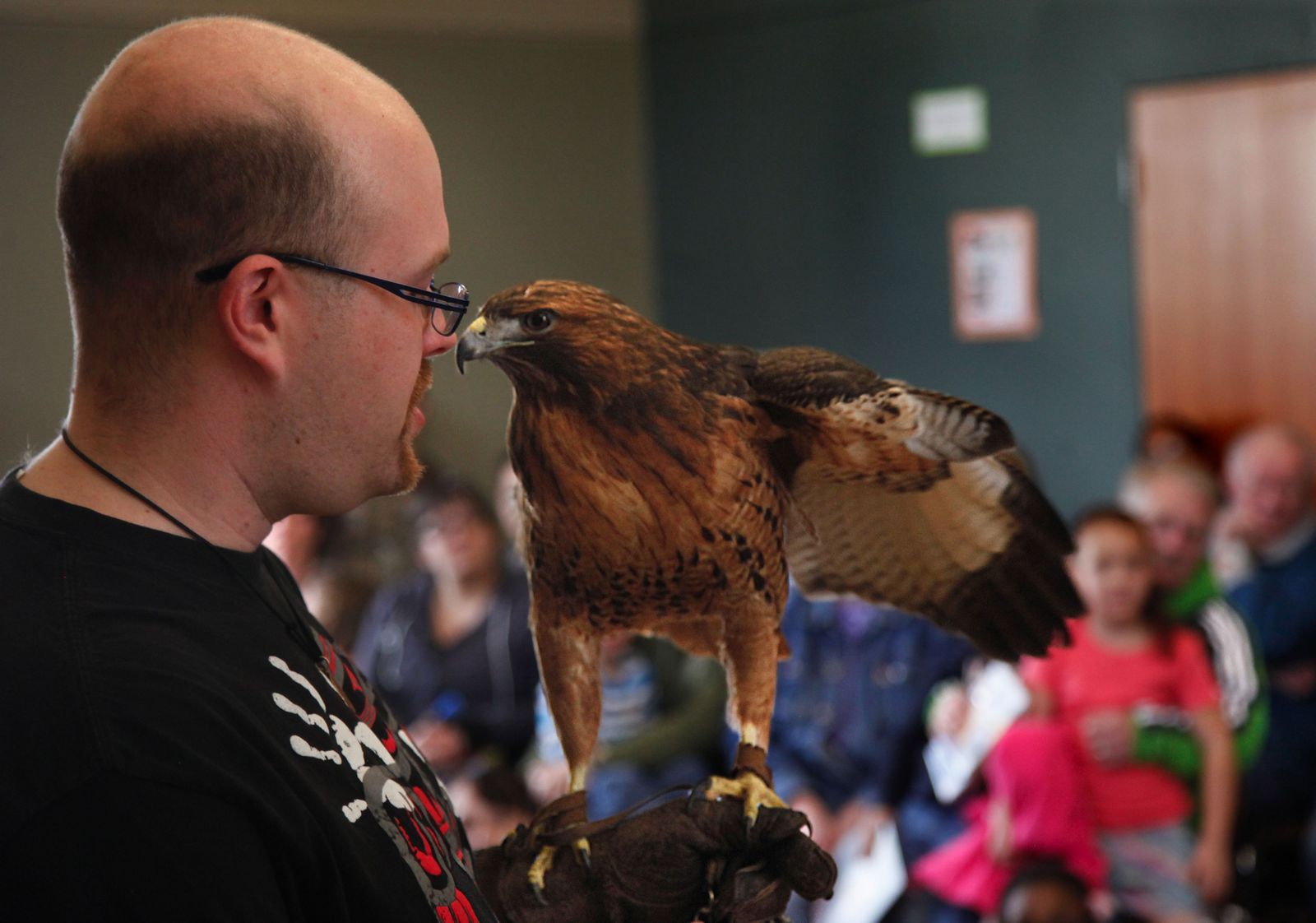By Renee Roman Nose, Indian Country Today Media Network
Courtney Lewis lives in what had been until last month a pretty quiet Seattle neighborhood. Lewis’s home is a friendly place, where children in the neighborhood regularly gather to play. She has always been close to Henry Northwind, the Cree man who lives next door with his son, Jack. Over the three years they have lived there, Henry’s son, Jack Keewatinawin, became good friends with her son, Tino Lewis-Sosa. They often played video games together, or tossed a football around in the yard. Jack, who turned 21 in early February, had mental issues, but no one in the neighborhood had ever had a problem with him. Neighbors say the poor boy was “always scared” of the demons and ghosts that haunted him, but was never a threat to his friends and neighbors.
A little before 8 p.m. on the evening of February 26, just as darkness fell, Seattle police answered a report of domestic disturbance by Keewatinawin’s two older brothers, Hawk Firstrider and Montano Northwind. On the recording of that 911 call, one of them says, “My dad is being killed right now, please! My brother’s schizophrenic and he’s flipping out and he’s got a knife to him!”
Officers on the scene confronted Keewatinawin outside his father’s house, on his front lawn; they shot him with Tasers twice in an attempt to subdue him, but he pulled the two probes out of his chest and ran into the front yard of the duplex next door, where the Brubaker family lives. Officers chased him across the shared lawn of the two duplexes, and in a dimly lit area, the police say, one officer slipped and fell, and was lying on his back. At that point, the police report of the incident states, “The suspect withdrew a long piece of metal from his beltline and raised it over his head, and came toward the officer.
“The three officers were forced to fire their weapons to defend themselves, striking the suspect.”
According to Seattle Police Deputy Chief Nick Metz, this all happened very quickly. The police say less than 30 seconds elapsed from when they first approached Keewatinawin to when he was shot. Keewatinawin was shot multiple times. (Witnesses say they heard between 8 and 11 shots, but the family has not yet received a copy of the coroner’s report, so they don’t know how many times Keewatinawin was hit.) Jack Keewatinawin died moments later, lying in his neighbor’s grassy front yard, close to their driveway, in a large pool of blood.
The killing was witnessed by several neighbors, and most of them have troubling doubts about how the police handled the incident. One calls the shooting “totally unacceptable,” and others suggest that officers should have known Keewatinawin was a schizophrenic, since they’d been called to the house several times over the years when he was off his medication and having problems. Several times over the past three years, police had helped get him into an ambulance for a trip to the hospital. It is not clear if the responding officers were aware of the victim’s mental illness and history.
Henry Northwind, who was trying to calm both the police and his son that night, saw what happened from beginning to tragic end, and insists that the police murdered his son at close-range, in cold-blood.
**********
This was the second controversial shooting of an American Indian in the last two years in Seattle, and comes after the Department of Justice had investigated how that city’s police deal with confrontational situations. In 2010, totem carver John T. Williams was shot on a public street one afternoon after being confronted by a police officer mistook his carving knife to be a lethal weapon. The shooting was ruled unjustified by Seattle’s Police Firearm Review Board, and on April 29, 2011 the city of Seattle agreed to pay copy.5 million to the family of the Native woodcarver. In July, the Department of Justice and the city of Seattle signed an agreement that requires Seattle police to try to de-escalate such confrontations, and decrease their use of force.
Henry Northwind, Jack’s father, draws out a map describing how the events of February 26th happened. (Renee Roman Nose)
Henry Northwind was a agonized witness to the horrifying events of that day, and he insists the killing of his son was unjustified. He is a former policeman, and says he is familiar with the proper police protocol for such situations. He says those procedures were not followed.
He says that by the time police arrived in response to the 911 call, his son had calmed down, and that he and Jack were in their front yard. Northwind says he told the police that his son had a knife and a piece of iron. “He’s calmed down now, you don’t have to kill him,” he says he told them. “Don’t kill him, please!”
He says the lead officer pushed him aside and said, “He’s heavily armed.”
“I said, ‘Hey don’t kill my son!’ I was in front of them and Jack was [about five feet behind me]. At that time Jack turned around and ran straight back to the house and, in unison these guys moved … and I’d say there were about 15 cops on the curb … They all had shotguns and pistols drawn…[Jack] got to the porch and he turned around and two guys got him in the chest with the Tasers and he just ripped them out and took off again…he had thin, thin, really thin jacket and a real thin, super thin t-shirt, I saw [the Tasers] stick to his [chest] and he went like that”—indicating grabbing both Tasers and pulling them out—“and he just tore them away, and uh, you know that’s at least 50 thousand [volts]! [One policeman] said, ‘He just shook it off like somebody just slapped him!’”
At this point, Northwind’s telling of what happened that night diverges radically from the police account. The police report says Keewatinawin ran and one of the officers pursuing him fell at his feet, and appeared to be vulnerable to an attack. Northwind says this is not true. “When Jack ran over here, he slipped—there was no cop that slipped, I swear to God there was no cop, no! Jack was on the ground… and he got up. He was on one leg, he was getting up with his hands, and he went like this”—he throws his arms in the air—”and when he did that, they opened fire on him!
“They said he had something in his hand. There was nothing in his hand, nothing, not a damn thing.
“That last shot, my knees buckled on me and I said, “They killed my son!”
Northwind says a police officer ran up to him and said, “What are you doing over here?” Northwind says he told the policeman, “That’s my son you just murdered.”
Northwind claims that officers then put two guns to his head to keep him from running to his son.
He says that when he told one of the officers, “That’s my son you just murdered!” the officer replied, “Ugh,” and ran to the large group of officers. Moments later Northwind says he heard one policeman say, ‘Hey, found it!’ and another officer respond, “What?” “An iron bar,” came the reply. Northwind says he then heard the first officer say, “Oh, damn, now at least we have a story.”
“Right in front of my fucking face they said that!” Northwind says. “One guy said, ‘That’s the father!’ and the other guy says, “Oh, shit.”
“They were wrong, and they were in fear. I could see the fear in this guy’s eyes. I just gave him a tongue-lashing.” I asked him, “Are you happy? How many more Indians you think you need to kill?
“Finally, I just screamed, ‘They killed my baby boy!’”
**********
The knife Jack Keewatinawin was carrying when he was shot was found the next morning, but not by the police. The father of Courtney Lewis’s boyfriend found it in the Brubaker’s driveway, several yards from where Jack lay dying the night before.
Lewis says that when she and her family and boyfriend heard the commotion next door, they gathered at the windows to see what was going on. When they saw the police lined up across the street, facing them, looking toward the Northwind/Lewis duplex. She says her boyfriend sensed danger and told them all to “get away from the windows and go to the back rooms.”
As she and her children gathered in the back of the house, she called out to him to join them. As he came down the hallway the shooting began. It was over in a moment, Lewis says, and then “We could hear Henry crying out, ‘Stop shooting him! Stop shooting him!’
“I don’t think for a second that Jack was a threat to the police,” she says. “He was like one of the kids. Not for one second did I think he would hurt me or one of my kids.”
Olivia Brubaker, who lives in the duplex in front of which Jack was shot, says “There were fifteen cops in front of my house. My fiancé and I opened the front door to see Jack shot five or six times, bleeding severely, on my lawn. He was crying from all the pain and we heard the words, ‘Help me’ slipping from his lips.”
Olivia’s sister, Alexandra, says, “The cops said he had a weapon, that this weapon was a large metal rod… Those things that they have said are lies. From what I saw, from what other neighbors saw, what his family and friends saw, he had no weapon [on him] and died within minutes on my lawn.”
Several bullets fired by police went into the duplex on the other side of the Brubaker’s, one going through a front window and two through a wall. One neighbor reported that stray bullets hit a neighboring house as the homeowner was lying on the couch—that man says he heard “the bullets go whizzing by his head.”
Police reports state that Keewatinawin had three weapons: an 18-inch piece of rebar, a knife and what has been described as a “sharpened stone” but was actually a teardrop-shaped cephalopod fossil which had been in the Northwind family for years.
Montano Northwind, Jack’s oldest brother, says family members asked to view the police dash-cam videos of the shooting and were told the cameras were not turned on because the incident had occurred during a shift-change.
Olivia Brubaker says that after the shooting she saw and overheard the police arguing with one another, saying, “How could you have done that? This is a big screw-up!”
Friends and neighbors of Henry Northwind also say the police did not interview them to find out what they saw or heard that evening.
Hawk Northwind, another of Jack’s brothers, adds, “The cops weren’t telling the truth, they weren’t. All of the sudden there’s no video camera? Saying there was a shift-change?… That’s bullshit… [They] have been shooting and killing us for five hundred years—when’s it gonna stop?”
**********
At this point there are more questions than answers. The Northwind brothers and their father are questioning why they weren’t allowed to view the body before it was prepared for viewing. They have requested a copy of the coroner’s report, and were told it will take 8-10 weeks to process their request. The family has met with an attorney and is weighing their options as they seek justice for Jack. Montano says his family wants, “Justice for Jack, justice for the mentally ill, justice for the Native community, and justice against police brutality that is going on everywhere, especially in Seattle. I don’t want it to be that way, but it seems especially bad in Seattle and I want it to stop.”
The family also hopes the Seattle police department can be compelled to abide by the recommendations it accepted in that Justice Department settlement.
Their friends and neighbors are also crying out for justice. “The truth must be told and heard about this loss,” Olivia Brubaker says. “Jack must be remembered so something like this never happens again. So no more lives have to be lost like this, so the children of any neighborhood are not scarred mentally. The cops lied about his weapon, about his death, and about the threats he made toward them.
“Justice must be brought upon the cops involved with his death. I hope to encourage others to stand up and let the truth be known.”
Read more at http://indiancountrytodaymedianetwork.com/2013/04/03/neighbors-dispute-police-account-shooting-native-man-seattle-148519















